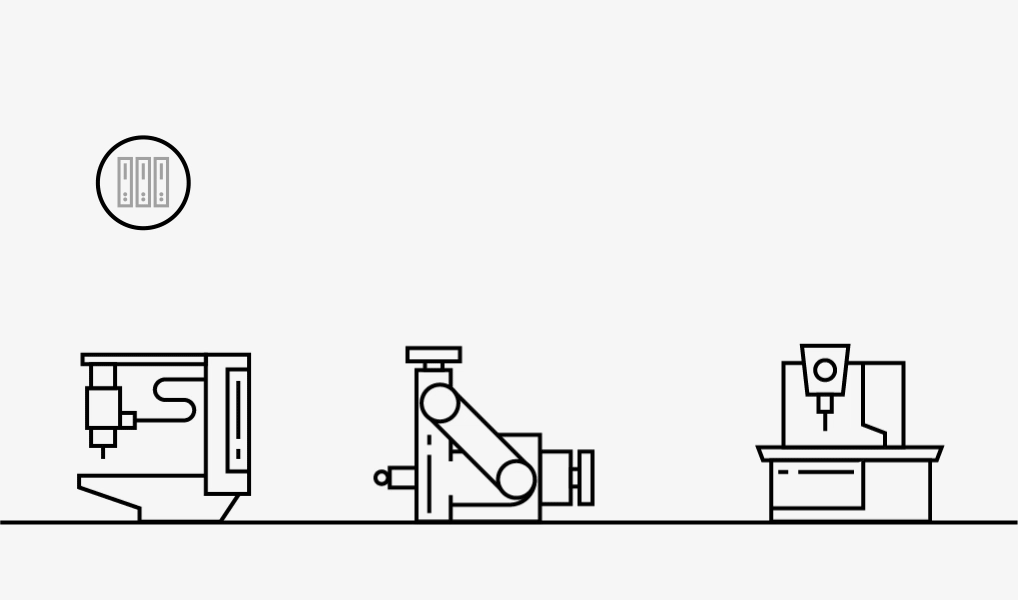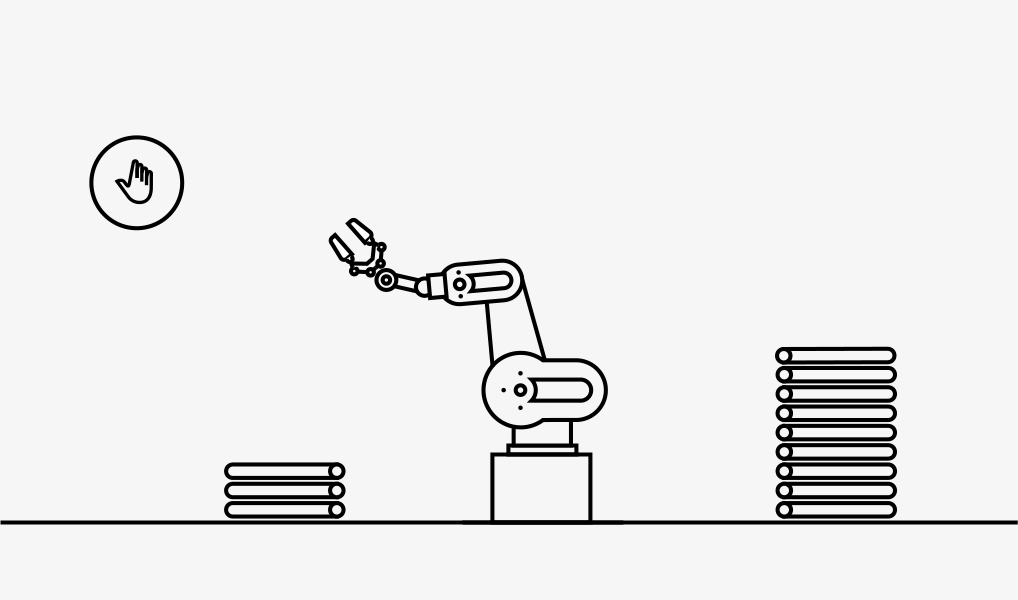Powered by Verizon 5G Ultra Wideband, automated industrial machinery is expected to become smarter, more nimble and, ultimately, safer.
From the assembly line to the fulfillment center, automated machinery already plays a vital role in industrial processes. That kind of factory automation, however, is just the tip of the articulated robotic arm.
The advent of 5G has the potential to drive a massive change in digitized operations, opening up a broad playbook of all-new robotic applications and having a transformative impact on everything from production to inventory management to warehouse logistics.
“There’s no area more prepared for positive 5G disruption than the manufacturing industry,” confirms Thierry Sender, director of IoT and real-time enterprise product strategy at Verizon. “5G should deliver never-before-seen enhancements and improvements to all aspects of industry.”
An ultra-fast, low-latency network should help enable robots to become fully integrated pieces of the Industrial Internet of Things (IIoT). A next-gen network also has the potential to radically increase the viability of augmented and virtual reality on the factory floor, changing the way robots and humans work together. Ultimately, robotics in the age of 5G can make operations more efficient while also improving worker safety and the bottom line.
By the numbers: 5G and robotics
1 International Federation of Robotics
2 World Economic Forum
3 Future of Jobs Report 2018, World Economic Forum
4 Extraordinary Future via Visual Capitalist
Rapid factory reconfiguration
Rarely is a factory floor a static patch of real estate. Massive machinery must be repositioned regularly to account for shifts in scheduling and production. These changeovers can be literally a heavy lift — and that’s before factoring in proximity to fixed power sources or precision recalibration.

But with 5G, industrial robots have the potential to get smaller, lighter and easier to move from A to B. With 5G, less computing power is needed aboard a robot because complex functions can be performed on nearby servers, with negligible impact on machine responsiveness. This means clunky processors and giant batteries can be stripped from robots, reducing their form factors and drastically increasing their mobility. In some cases, a piece of machinery that was previously tethered to an electrical outlet may be freed to move nimbly around the floor—even autonomously.
When factories can be retooled efficiently, production uptime can increase. More importantly, limiting the movement of heavyweight equipment reduces the risk of worker injury.
Computing on the fly
Unmanned aerial vehicles, or AEVs, already perform inventory management functions in large warehouses, but with 5G, their operational value to organizations could soar.

Picture a drone buzzing through a fulfillment center, scanning barcodes, recording the location of products to be retrieved and shipped. The drone moves from shelf to shelf, row to row, storing data that will eventually be downloaded onto a central server and algorithmically analyzed so that scheduling and restocking decisions can be made. By any measure, this is quite a feat, something scarcely imaginable even a decade ago.
Provided with a next-gen network, however, drones are expected to more seamlessly incorporate artificial intelligence into their routines, and instead of scanning barcodes, they should identify entire products at a glance using computer vision, processing gathered information in near-real time using cloud-based applications. Valuable time won’t be wasted waiting for the drone to dock and upload its cache of data. Rather, it will be sent over the air. And because the onboard compute and battery power have been minimized, the drones themselves can shrink.
The anticipated benefits: more decision-making power essentially in real time, lower product loss and a 360-degree, always-on view of stock, from check-in to ship out.
“There’s no area more prepared for positive 5G disruption than the manufacturing industry. 5G should deliver never before seen enhancements and improvements to all aspects of industry.”
— Thierry Sender, director of IoT and real-time enterprise product strategy at Verizon
Robot patrol
From automated guided vehicles, or AGVs, rolling through the production floor using computer vision, to autonomous industrial lift trucks relying on equal parts strength and artificial intelligence, mobile robotics are predicted to fundamentally change the way humans and goods navigate a busy workspace.

Consider a worker using a forklift to move a stack of nestable pallets. Unforeseen obstacles or misoperation can lead to damaged product or machinery, or worse yet, serious injury. But with 5G, autonomous vehicle technology can put the forklift in constant sensor contact with its surroundings, adding precision to its path and minimizing human error. In some cases, workers won’t need to be behind the wheel at all, instead relying on augmented and virtual reality —technologies that are expected to become truly viable with the speed and low latency of 5G—to guide machines from remote locations.
AGVs can also “know” more about what they’re hauling—what it is, where it needs to go and how best to get it there—so companies can maintain secure custody chains and avoid costly write-downs owing to misplaced inventory.
No-code machine reprogramming
Training a human worker to perform a new task can be time-consuming, but training a robot to take on a new job can be virtually impossible. 5G network technology, however, can provide some companies with a unique way of expanding the capabilities of their robotic forces. Using augmented reality and artificial intelligence, robots should become more adaptable.

Being able to simply tell a robot what to do and rely on it to figure out how—repurposing a depalletizing tool to assist in physical inspection, for instance—will be a gamechanger for many industries. In addition to the obvious cost benefits, companies can accelerate redeployments, optimize workflows and get the most out of their employees.
As these technologies demonstrate, advanced automation may ultimately change the nature of what humans are responsible for on the job site.
The future is 5G
5G is the fifth generation of wireless technology. But users will know it as one of the fastest, most robust technologies the world has ever seen. That means not only quicker downloads, but also richer immersive experiences that have a massive impact on how we live, work, learn and play. The connectivity benefits of 5G will make businesses more efficient and give consumers access to more information faster than ever before. Autonomous cars, smart communities, industrial IoT, remote healthcare—they all will rely on 5G.
“We talk about 5G as the Fourth Industrial Revolution,” says Verizon CEO Hans Vestberg. “What we are doing is transformational. Here at Verizon, we not only have the best network for today, but also for tomorrow. It’s why we always say: We don’t wait for the future. We build it.”
Is your business ready for 5G?
Our 5G assessment and technology adoption tool will help you see how ready you are. Your answers will shape a personalized report, identifying key technologies that could help you fuel your 5G action plan. Start the assessment.
